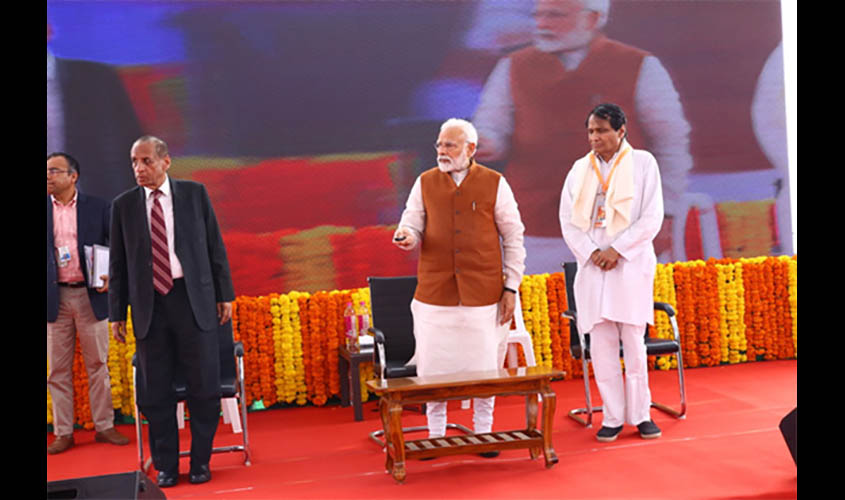The Modi-led government, which gives importance to national security and strategic measures, has not only expedited the project, but also decided to expand it by threefold to meet the oil needs of the country for about a month.
HYDERABAD: Many may not have known the importance of Prime Minister Narendra Modi dedicating to the nation the crude oil storage facility at Visakhapatnam on 10 February. This is a delayed, but a significant step for India as it joined a club of around 27 countries in the world which have created oil reserves to meet emergency conditions like war.
The Modi-led Bharatiya Janata Party (BJP) government, which gives more importance to national security and strategic measures, has not only expedited the project actually conceived during the UPA-1 regime, but also decided to expand it by three fold to meet the oil needs of the country for about a month, in league, though not on par, with other major nations like the US, China and Russia.
The PM formally opened the crude oil reserve facility at Visakhapatnam with a capacity of 1.33 million metric tonnes (MMT) or 9.77 million metric barrels (Mmbbls) and built at a cost of Rs 1,178.35 crore. This is constructed inside a cavern of Sindhia Hills facing Bay of Bengal. The storage is constructed 300 meters beneath the sea level with a 30 meter height and 20 meter width and 5 km length.
According to a spokesman of Indian Strategic Petroleum Reserves Limited (ISPRL), who was present at the PM’s programme at Guntur on Sunday, this is the first of many such storage facilities to come up in the country over the next few years. “Even if a nuclear-headed missile hits above the facility, it will be intact,” said the official preferring not to be quoted.
The Visakhapatnam storage facility spread over 68 acres had been sanctioned way back in 2004, but its construction began in 2008 and two compartments were completed in 2015. Filling up of crude oil began that year and now it is ready for completion. The ISPRL has taken technological help from Switzerland which began constructing petroleum storages way back in 1944, since World War II.
Two more facilities which have been completed are: Mangalore with 1.5 MMT (11Mmbbls) and Padur (Udipi) with 2.5 MMT (18.37 Mmbbls), both in Karnataka. These two facilities, too, were built below the ground against hills and are close to the Arabian Sea. The government has decided to build these storages close to oil refineries so that their processing would be quick.
The Mangalore storage was built over a cavern on 104.73 acres in two compartments at a cost of Rs 1,127 crore and the Padur facility constructed over 179.21 acres with four compartments at a cost of Rs 1,693 crore. The four facilities can store around 5.33 MMT (36.92 Mmbbls) and a total Rs 4,098 crore has been spent by the ISPRL which is owned by the Ministry of Petroleum and Natural Gas.
The oil stored in these four facilities can meet the petroleum needs of India for about 30 days. However, the Modi government has decided to augment this capacity to meet the oil needs of the country up to three months. In the 2017-18, Finance Minister Arun Jaitley sanctioned two more facilities at Chandikhole in Jaipur in Orissa and Bikaner in Rajasthan to take the total crude oil storage facility to 15.33 MMTs.
Besides, the Centre has decided to sanction two more storages at Rajkot in Gujarat and expand another unit at Padur in Udipi so that an additional 10 MMT can be stored. As several countries have been showing interest in joining as partners in the storages built so far, the Centre is keen on building some more facilities to meet the oil needs of India for three months, an ISPRL official told this newspaper.
All the major countries have this type of oil storage facilities not only to face the contingencies of war or war-like situations, but also to meet natural calamities and global oil price fluctuations. “The more a country has enough oil reserves to meet its needs, the more will be its bargaining power in the global oil market in times of emergency,” said the official.
However, India’s efforts can be termed as “baby steps” now as most of the developed countries have their oil storage facilities and even smaller countries like Pakistan are on the process of building them. The US, which accounts for the largest oil storage capacity, has facilities 60 to 70 times more than that of India, and China with 20 times that of our near future capacity.

